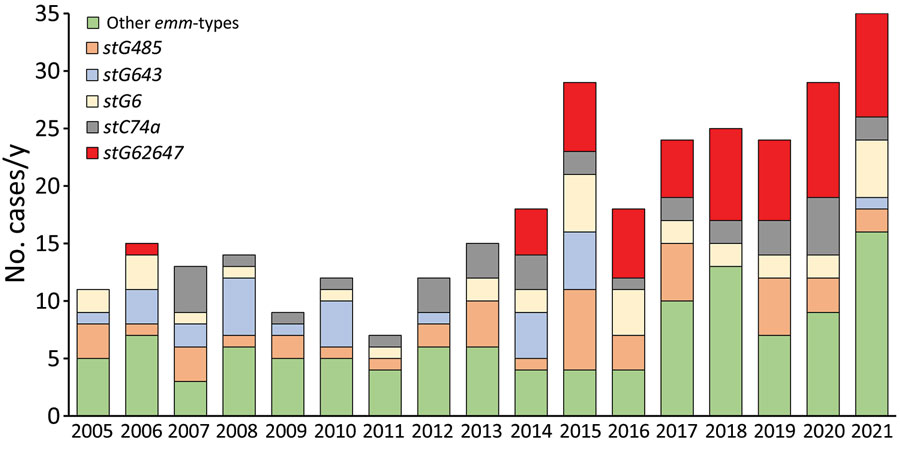Volume 29, Number 2—February 2023
Synopsis
Streptococcus dysgalactiae Bloodstream Infections, Norway, 1999–2021
Figure 5

Figure 5. Distribution of the most common emm-types among Streptococcus dysgalactiae bloodstream infections, western Norway, 2005–2021. We identified most common emm-types among 351 S. dysgalactiae bloodstream infections in Health Region Bergen, Bergen, Norway. Two isolates were not available for typing, and the S. dysgalactiae subspecies dysgalactiae isolate could not be typed.
Page created: December 07, 2022
Page updated: January 21, 2023
Page reviewed: January 21, 2023
The conclusions, findings, and opinions expressed by authors contributing to this journal do not necessarily reflect the official position of the U.S. Department of Health and Human Services, the Public Health Service, the Centers for Disease Control and Prevention, or the authors' affiliated institutions. Use of trade names is for identification only and does not imply endorsement by any of the groups named above.